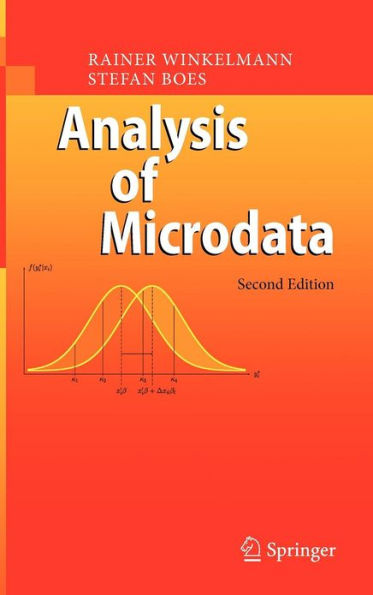Analysis of Microdata
The availability of microdata has increased rapidly over the last decades, and standard statistical and econometric software packages for data analysis include ever more sophisticated modeling options. The goal of this book, now in its second edition, is to familiarize the reader with a wide range of commonly used models, and thereby to enable her/him to become a critical consumer of current empirical research, and to properly conduct own empirical analyses. The book can be used as a textbook for an advanced undergraduate, a Master’s or a first-year Ph.D. course on the topic of microdata analysis. In economicsandrelateddisciplines,such a course is typically offered after a first course on the linear regression model. Alternatively, the book can also serve as a supplementary text to applied field courses, such as those dealing with empirical analyses in labor, health or education. Finally, it might provide a useful reference for graduate students, researchers and practitioners who encounter microdata in their work. The focus of the book is on regression-type models in the context of large cross-section samples where the dependent variable is qualitative or discrete, or where the sample is not randomly drawn from the population of interest, due to censoring or truncation of the dependent variable. While our ba- groundis in economics, and we occasionally refer to problems and applications fromempiricaleconomics,the models discussed in this book should be equally relevant wherever microdata are used, inside the social sciences, including for example quantitative political science and sociology, as well as outside.
1101317804
Analysis of Microdata
The availability of microdata has increased rapidly over the last decades, and standard statistical and econometric software packages for data analysis include ever more sophisticated modeling options. The goal of this book, now in its second edition, is to familiarize the reader with a wide range of commonly used models, and thereby to enable her/him to become a critical consumer of current empirical research, and to properly conduct own empirical analyses. The book can be used as a textbook for an advanced undergraduate, a Master’s or a first-year Ph.D. course on the topic of microdata analysis. In economicsandrelateddisciplines,such a course is typically offered after a first course on the linear regression model. Alternatively, the book can also serve as a supplementary text to applied field courses, such as those dealing with empirical analyses in labor, health or education. Finally, it might provide a useful reference for graduate students, researchers and practitioners who encounter microdata in their work. The focus of the book is on regression-type models in the context of large cross-section samples where the dependent variable is qualitative or discrete, or where the sample is not randomly drawn from the population of interest, due to censoring or truncation of the dependent variable. While our ba- groundis in economics, and we occasionally refer to problems and applications fromempiricaleconomics,the models discussed in this book should be equally relevant wherever microdata are used, inside the social sciences, including for example quantitative political science and sociology, as well as outside.
129.99
In Stock
5
1

Analysis of Microdata
343
Analysis of Microdata
343Hardcover(Second Edition 2009)
$129.99
129.99
In Stock

Product Details
| ISBN-13: | 9783540927471 |
|---|---|
| Publisher: | Springer Berlin Heidelberg |
| Publication date: | 02/05/2009 |
| Edition description: | Second Edition 2009 |
| Pages: | 343 |
| Product dimensions: | 6.20(w) x 9.40(h) x 1.00(d) |
From the B&N Reads Blog
